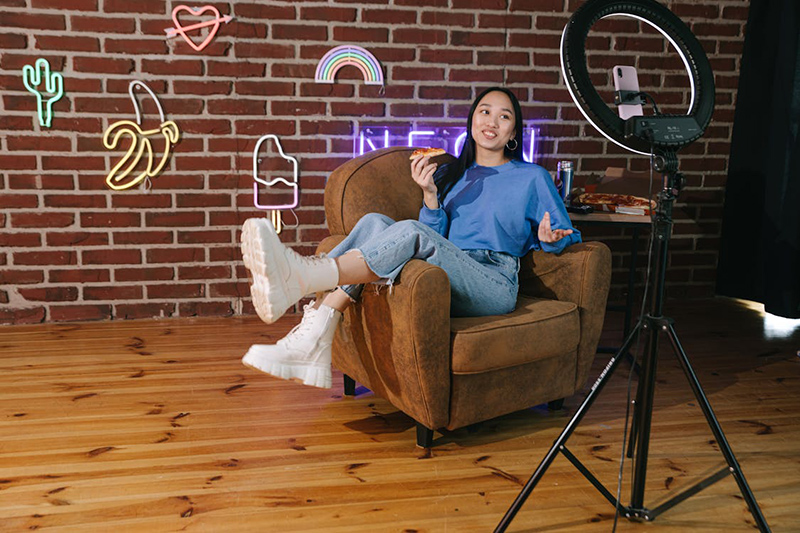Our research shows what here’s what you need to know first
By Sarah Glozer and Hannah Trittin
You’re hard at work, lying in a hammock, composing the perfect selfie on the beach. The turquoise sea sets off the idyllic sunset, and just visible though the fronds of a palm tree is the logo of the hotel which is paying you to promote it to your millions of followers on Instagram.
Click. The perfect shot. And another typically perfect day in the life of an influencer. Or is it?
Certainly a career as an influencer can seem appealing. The work generally involves promoting products or services through sponsored social media posts or “branded content”, and communicating with people who are interested in what you do.
The industry is worth over £16 billion, with organisations from large brands such as Coca Cola through to local tourist boards seeking to benefit from this “authentic” form of marketing.
And for a small handful of influencers, the world of celebrity beckons. But for the vast majority, our research which involved interviewing influencers and brand representatives, suggests that making a living in this industry is hard work and poorly paid (if at all).
Here are three things to remember if influencing feels like the career for you.
There are no set rates of pay for influencers. Contracts are likely to be short and job protection is limited, which means career trajectories and pay are unpredictable.
For those who do get paid, earnings can range anywhere between £10 to £10,000 for one post. One survey indicates that average monthly earnings for “micro-influencers” (1,000 to 10,000 followers) are around £1,135 per month, while for “mega-influencers” (over 1 million followers) the figure is £12,279.
Rates are calculated based on things like the cost of content production and the metrics generated from social media algorithms which include the numbers of followers an influencer has, in the same way that TV advertising rates are based on the number of expected viewers.
Financial acumen is key to avoiding working for free. Some influencers create “rate cards” or “media kits” containing key information for prospective corporate partners.
As one influencer explained: “When I work with brands or when they approach me for collaborations, I send them my media kit. That’s where it’s all listed – what reach I have, how many people follow me, what my engagement rate is, and my prices. It’s a form of defining myself on this platform.”
Behind almost every fantastic image or video lies administrative and creative effort. The apparent glamour of influencing can take a lot of hard graft, with plenty of time and energy invested into creating social media content.
One influencer commented: “Remember that you are wearing multiple hats – concept creator, set designer, stylist, lighting director, makeup artist, marketing specialist, and photographer – when you’re posting for any brand.”
So influencers need to multi-task, creating images, videos, blogs, podcasts and even their own merchandise.
Affiliate programmes are also a popular avenue for influencers to earn money from brands, where they are paid when one of their followers uses a link they have publicised to purchase a product or service. Amazon for instance, runs its own affiliate programmes and encourages influencers to “select the best of Amazon’s products and services, easily recommend them to your followers and earn commissions on qualifying purchases”.
Given this vast portfolio of tasks, influencing work can be relentless. Social media is open for business 24 hours a day, so constantly maintaining relationships with followers and fuelling those social media algorithms means influencing can feel like a job which never stops.
The need to constantly be switched on can take its toll, as can rejection from brands and criticism from followers. We are only just learning about the mental health struggles that lie behind perfectly curated Instagram feeds.
So why do influencers stick at it? Our work suggests that most influences did not start out with a desire to influence others, but to provide a creative outlet for their passions.
They might be a Bangladeshi food enthusiast who began sharing restaurant tips with their friends and soon became a local food critic. Or maybe a British travel blogger who enjoyed posting pictures from romantic getaways and now commissions work from tourism boards. Or they could be an Australian fitness fanatic who began sharing healthy recipes online and now sells nutritional e-books, supplements and online coaching services.
Most of the successful influencers we spoke to started their career with a genuine love for something they wanted to share with others.
For them, influencing brought enjoyment and fulfilment. Most do not even see themselves as influencers, but as content creators avidly committed to their audience. One influencer laughed when we referred to him as an influencer, preferring to describe himself as “just a regular person who likes to cook”.
Many influencers also enjoyed their online sense of community, sharing tips with one another, or participating in “engagement circles” where they would like and share other influencers’ content to increase its visibility. There was a strong sense of influencing being a collective endeavour, of working towards a shared goal of getting paid for doing work that they love.
Overall we found that being a successful influencer requires resilience, management skills and passion. Master all of this, and maybe one day you too could be taking that selfie in a beach hammock, with hopefully some extra cash to spend on an ice cold drink at the end of the working day.
Sarah Glozer is Senior Lecturer in Marketing & Society, University of Bath
Hannah Trittin is Professor of Business Administration, Leuphana University
This article is republished from theconversation.com under a Creative Commons licence







Click here to change your cookie preferences